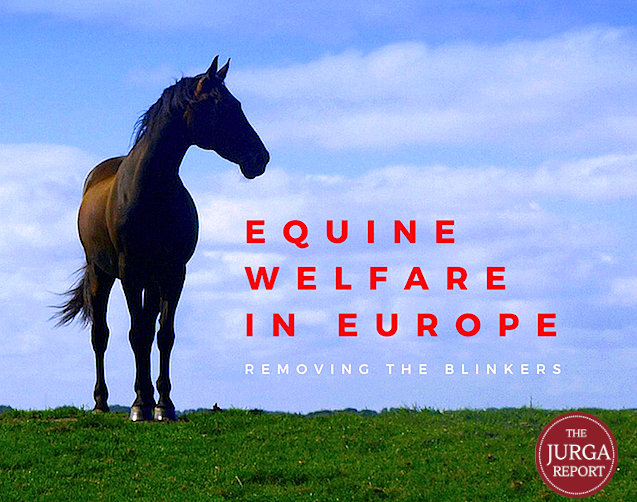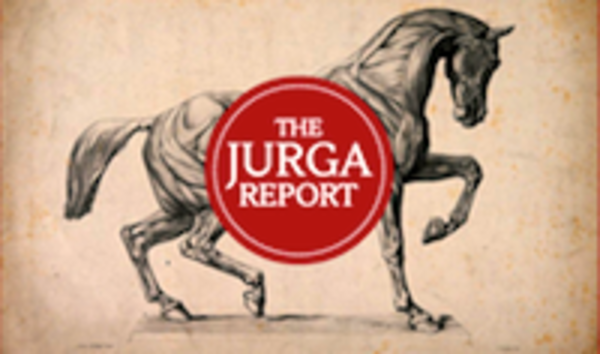Equine Welfare in Europe Report: “Horses Often Fall Between the Cracks”
- March 10, 2017
- ⎯ Fran Jurga

They’re half a world away, but their problems look familiar. Their languages may be unfamiliar to us, and some of their problems don’t quite translate, but horses in Europe still have some of the unique problems facing horses in America.
That was the conclusion of an American-filtered reading of a new report to the European Union, published this week by EuroGroup for Animals and World Horse Welfare. For instance:

Although we think it is different there, they really don’t know how many horses live in Europe. (Neither do we in the USA.) The “best guess” of the study’s authors pinned a number of 6.99 million horses on the European continent, including the British Isles. Estimates of the horse population of the United States range from three to ten million.
Even though the picture of modern horses is the sport or recreational horse, the use of horses in agriculture still prevails in many places and complicates legal and practical aspects. (It also does in the USA.)
Reforming laws governing the transport of horses to slaughter and other equine welfare campaigns are emotion-charged issues for animal advocates that must be decided by politicians who may be far-removed from advocates’ priorities. (This is also the case in the USA.)
Removing the Blinkers: The health and welfare of European equidae in 2015 is the first report to investigate the scale of the horse sector in Europe, legislation affecting it and the key health and welfare challenges of the EU’s equids. During the European Parliament Intergroup for Animal Welfare and Conservation in Strasbourg, France, the two organizations presented the findings of the report, which calls for species-specific legislation to protect horses, donkeys and mules who so often “fall between the cracks between legislation designed for farm or companion animals”, according to the authors.
In spite of being at the center of a €100 Billion industry employing 896,000 people across Europe, horses there are surrounded by statistical question marks. How many equids are in the EU? What are they used for? Are existing laws sufficient to protect them? What contribution do equids make to society and what are the main health and welfare problems in the EU equine population?
The European Commission and the established European Commission Equine Steering Committee identified five areas of specific concern to look into: (i) Identification and registration, (ii) Welfare at transport, (iii) Welfare at slaughter, (iv) Responsible ownership and (v) Rural development.
The new report is the first attempt to look at these concerns and to map out the sector, laws and health and welfare problems of Europe’s equine sector.
Roly Owers, CEO of World Horse Welfare commented: “This report provides a long overdue insight into the EU’s equine sector, and the welfare challenges our horses face. We are talking about a relatively small population of seven million animals – but one that generates at least €100 billion to the EU, often in rural areas where we are in dire need of more growth and development.
“We cannot allow this sector to continue being ignored at European level, either in terms of the health and welfare issues, or in terms of securing a sound future for a sector that has traditionally been one of the prides of Europe, that is proving to be such a valuable export industry and that is still so relevant to European society today.”
Reineke Hameleers, Director of Eurogroup for Animals continued; “We see through this report that there is a real need for better and harmonized protection of equids through species-specific legislation as well as non-legislative guidance on responsible ownership. We will use this research as an important conversation opener with all EU stakeholders, and it will form the basis of our policy agenda for at least the next five years. Now is the time for the European Commission to take action and launch the first proper impact assessment of any future legislation affecting equines and start addressing the concerns raised.”
World Horse Welfare and Eurogroup for Animals reported that they were delighted with the strong support they received for this work and its recommendations during the Intergroup session, and urged all members of the European Parliament not only to call for species-specific legislation but also to support the forthcoming Own Initiative Report on responsible equine ownership by MEP Julie Girling.
While many of the recommendations are related to overseeing slaughter and the transport of horses to slaughter, there are many references to the range of equid activities and usages in countries where horses are quite rare, such as Slovakia, to where they are very dense, such as Belgium, and where they are used almost exclusively for pleasure and sport compared to where they are engaged chiefly in agriculture.
Can one set of welfare rules apply to all?
While Europe is very different from the USA, it can be very instructive to read their interpretation of their welfare situation and their proposal of a possible way forward. Has such a collaborative “road map” study and document ever been done in North America?
And if you are curious, this study states that France has the highest population of horses in the EU, followed by the United Kingdom, Romania, Spain and Belgium.
The full report is available for download, or an executive summary is available, as well.





